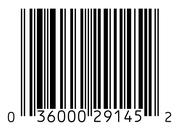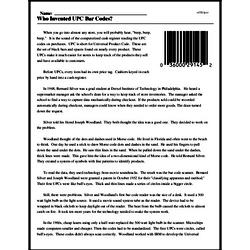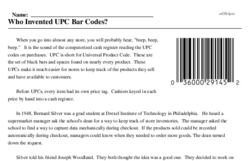Who Invented UPC Bar Codes?
When you go into almost any store, you will probably hear, "beep, beep, beep." It is the sound of the computerized cash register reading the UPC codes on purchases. UPC is short for Universal Product Code. These are the set of black bars and spaces found on nearly every product. These UPCs make it much easier for stores to keep track of the products they sell and have available to customers.
Before UPCs, every item had its own price tag. Cashiers keyed in each price by hand into a cash register.
In 1948, Bernard Silver was a grad student at Drexel Institute of Technology in Philadelphia. He heard a supermarket manager ask the school's dean for a way to keep track of store inventories. The manager asked the school to find a way to capture data mechanically during checkout. If the products sold could be recorded automatically during checkout, managers could know when they needed to order more goods. The dean turned down the request.
Silver told his friend Joseph Woodland. They both thought the idea was a good one. They decided to work on the problem.
Woodland thought of the dots and dashes used in Morse code. He lived in Florida and often went to the beach to think. One day he used a stick to draw Morse code dots and dashes in the sand. He used his fingers to pull down the sand under the dots. He saw thin lines in the sand. When he pulled down the sand under the dashes, thick lines were made. This gave him the idea of a two-dimensional kind of Morse code. He told Bernard Silver. They created a system of symbols with line patterns to identify products.




